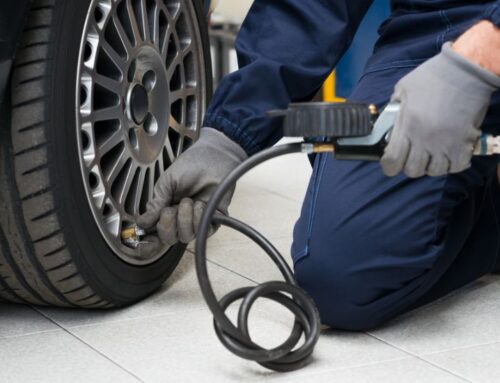Tire tread patterns often go unnoticed, yet they hold significant importance in ensuring safety and optimal performance on the road. These intricate designs etched onto your vehicle’s tires aren’t purely aesthetic; they are the result of extensive scientific research and engineering. Understanding their purpose and functionality is crucial for every driver. This article delves into the science behind tire tread patterns, demystifying their forms and shedding light on their integral role in safe and efficient driving.
Decoding the Mystery of Tire Tread Patterns
Tire tread patterns are far more than decorative features on your wheels. They have practical functions in enhancing traction, preventing hydroplaning, reducing noise, and optimizing ride comfort. The type of tread pattern on a tire depends on its intended use.
For example, symmetrical tread patterns are generally used on passenger vehicles for their quiet and long-lasting performance, while asymmetrical ones are designed for high-performance vehicles to provide better grip during cornering. Furthermore, directional tread patterns are commonly found on sports cars and high-performance vehicles due to their excellent wet-weather traction.
Understanding these patterns not only keeps you safer on the road but also helps you make informed decisions when buying new tires.
Tire Tread Basics: Understanding the Fundamentals
Each tire tread pattern is comprised of different elements, which together serve to enhance your vehicle’s performance on various road conditions. These elements can be divided into three main parts: tread blocks, sipes, and grooves.
- Tread blocks are the large sections that make up the pattern; their shape and arrangement play a significant role in the tire’s grip and handling qualities.
- Sipes are the small slits within the tread blocks designed to improve traction, particularly on wet or icy surfaces, by opening up and biting into these surfaces.
- Grooves are the spaces between the tread blocks, which help displace water from beneath the tire to prevent hydroplaning.
The depth of your tire tread also holds importance, as it can greatly influence your vehicle’s traction and performance. As a rule of thumb, less tread depth leads to less grip, especially on wet roads. Conversely, tires with more tread depth provide better traction but might also lead to increased road noise and reduced fuel efficiency. Understanding these fundamentals paves the way for a deeper comprehension of the different types of tread patterns and their respective performance characteristics.
The Role of Tread Patterns in Road Safety and Vehicle Performance
The influence of tread patterns on road safety and vehicle performance cannot be overstated. Primarily, tread patterns play an instrumental role in maintaining traction between the tire and the road surface. Be it dry asphalt, wet pavement, or icy conditions, the right tread pattern can significantly reduce the risk of skidding or losing control – thus contributing to overall road safety.
In terms of performance, different tread designs cater to different driving needs. For instance, a tire with a symmetrical tread pattern offers a smooth and quiet ride, making it an ideal choice for everyday commuting. On the other hand, an asymmetrical tread pattern provides enhanced grip during high-speed cornering, suiting the demands of sportier, high-performance driving. Therefore, by understanding and selecting the appropriate tread pattern, drivers can optimize their vehicle’s performance based on their specific driving conditions and preferences.
The choice of tire tread pattern also has implications on fuel efficiency. Tires with low rolling resistance tread patterns have been shown to improve fuel economy, highlighting the economic and environmental benefits of the right tread pattern choice. Thus, by offering a trade-off between traction, noise, ride comfort, and fuel efficiency, tire tread patterns hold the key to tailored vehicle performance and safety.


Important Facts
According to the National Highway Traffic Safety Administration (NHTSA), improper tire maintenance, including ignoring tire tread, was a factor in around 738 total motor vehicle traffic fatalities in 2017. They further highlight, “Tire tread provides the gripping action and traction that prevent your vehicle from slipping or sliding, especially when the road is wet or icy.” This statement underlines the critical role of tire tread patterns in ensuring road safety.
Different Types of Tire Treads and Their Specific Uses
Symmetrical Tread Patterns
Symmetrical tire treads, often found on passenger vehicles, feature a uniform pattern across the entire tire surface. This design offers balanced driving characteristics, including quiet operation and extended tire life. These tires are an ideal choice for drivers seeking a smooth and comfortable ride for everyday commuting.
Asymmetrical Tread Patterns
Asymmetrical tread patterns incorporate multiple tread patterns in a single tire, making them uniquely suited for high-performance vehicles. The outer side usually features larger tread blocks for increased grip during cornering, while the inner side includes finer grooves for better wet-weather performance. This pattern provides a high level of performance across a variety of conditions, making them a popular choice for sports cars and high-end sedans.
Directional Tread Patterns
Directional, or uni-directional, tread patterns are designed for optimal performance in wet conditions. These patterns feature a V-shaped groove pattern intended to channel water away from the center of the tire, reducing the risk of hydroplaning. As a result, these tires provide excellent wet-weather traction, making them a go-to choice for drivers in regions with frequent rain or snowy conditions. However, they must be installed in a specific direction and require more frequent tire rotations.
Each of these tread patterns is designed for specific driving conditions. Understanding the differences can help you choose the right tire for your vehicle and driving habits, ultimately enhancing your safety and driving experience.
Additional information related to this topic was covered in this article.
How Tread Patterns Affect Wet and Dry Road Traction
Tread patterns play a pivotal role in a tire’s traction on both wet and dry roads. For dry surface conditions, symmetrical and asymmetrical tread patterns are generally quite efficient. The even distribution of tread blocks in symmetrical patterns helps maintain stable contact with the road, providing consistent traction. Asymmetrical patterns, with their combination of different tread styles, can deliver excellent grip and control during high-speed maneuvers.
In contrast, wet road conditions demand a different set of characteristics. Tires with directional tread patterns are explicitly designed for these scenarios. The distinctive V-shaped grooves effectively channel water away from the tire’s contact patch, minimizing the risk of hydroplaning and ensuring superior wet traction. Furthermore, tires with deeper grooves and more abundant sipes can offer enhanced grip on wet surfaces by biting into the water layer and reducing the chances of slipping. As such, understanding how different tread patterns influence traction on wet and dry roads is vital for choosing the right tire that ensures optimal performance and safety in varying driving conditions.
Fuel Efficiency and Tread Design: What Drivers Need to Know
Fuel efficiency is an essential consideration for many drivers, and tire tread design plays a significant role in a vehicle’s fuel consumption. Tires with low rolling resistance tread patterns can greatly enhance fuel efficiency. These designs minimize the energy lost as the tire rolls, thereby reducing the amount of fuel required to propel the vehicle forward.
Higher fuel efficiency not only translates to cost savings for drivers but also contributes to environmental sustainability by reducing carbon emissions. It’s worth noting that while low rolling resistance tires can offer improved fuel efficiency, they may not provide the same level of grip or lifespan as other tires, underscoring the importance of considering all factors when choosing a tire. Therefore, understanding the relationship between tire tread design and fuel efficiency can help drivers make an informed decision that balances performance, safety, and economy.
Conclusion: Empowering Your Tire Choices with the Right Knowledge
In essence, tire tread patterns are more than just an aesthetic feature; they significantly influence your vehicle’s performance, safety, and fuel efficiency. By understanding the different types of tread patterns and their specific applications, you can make informed decisions that enhance your driving experience and safety on the road. Furthermore, recognizing the role of tread design in fuel consumption can lead to choices that not only save money but also contribute to environmental sustainability. Ultimately, the right knowledge of tire tread patterns empowers you to tailor your vehicle’s performance to your unique driving conditions and preferences.






